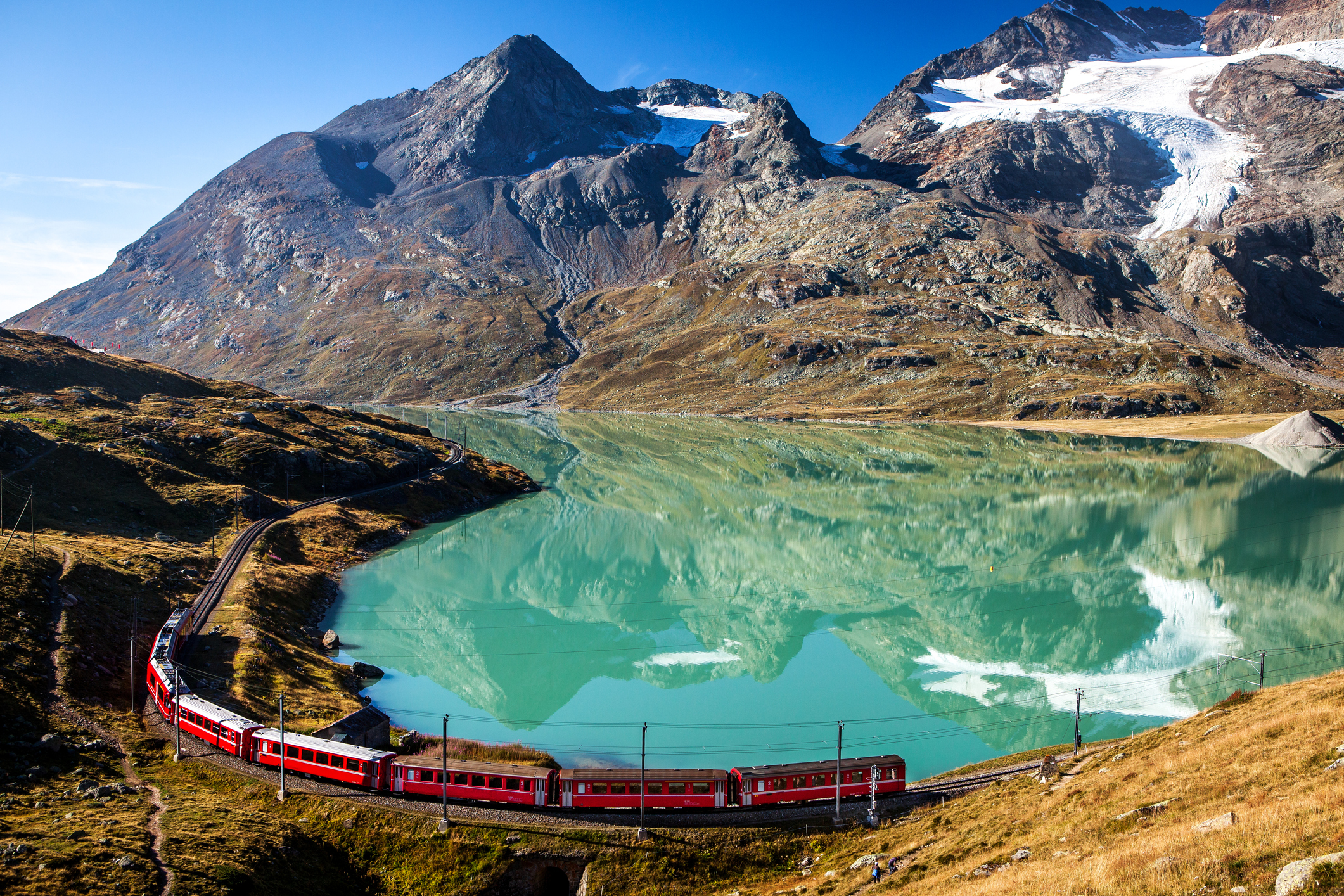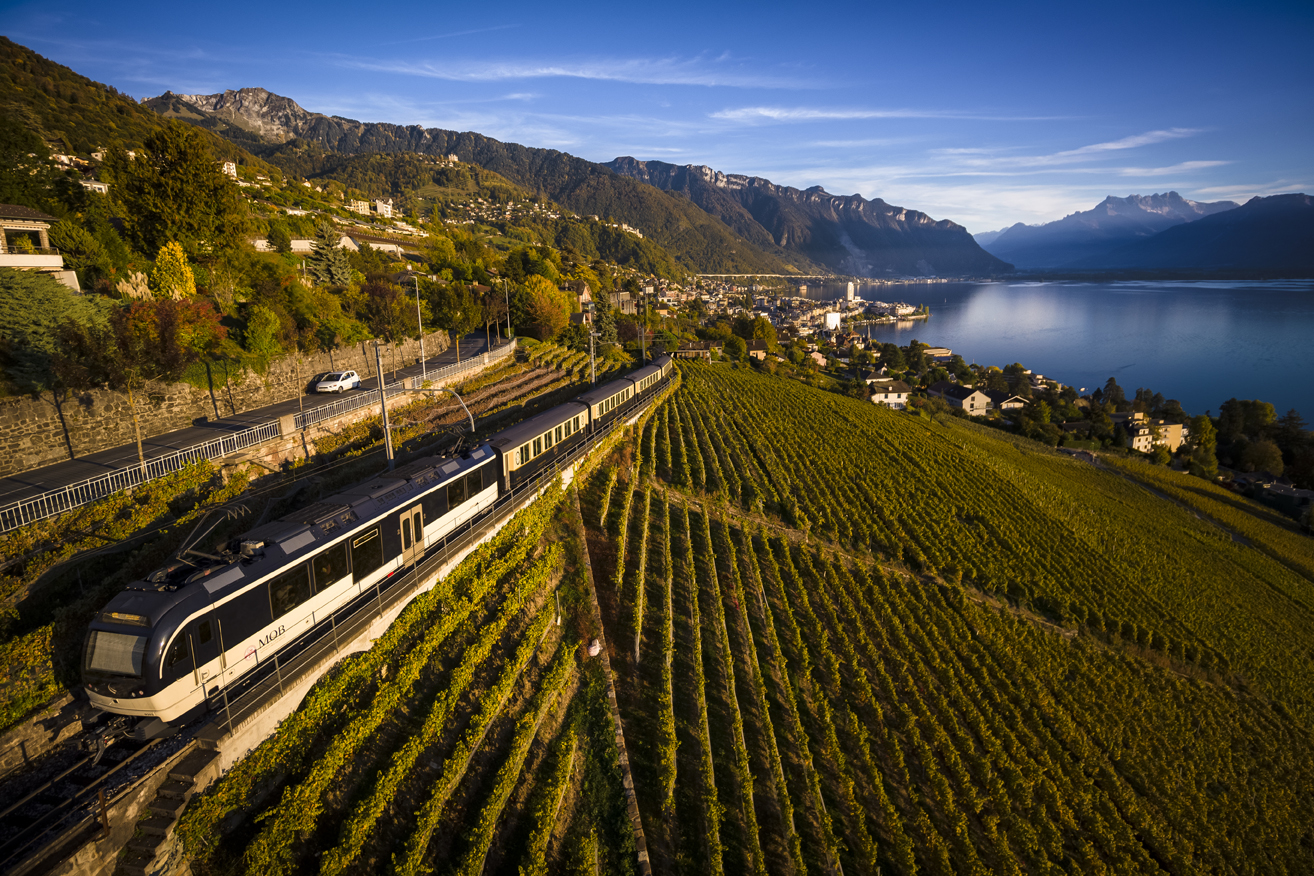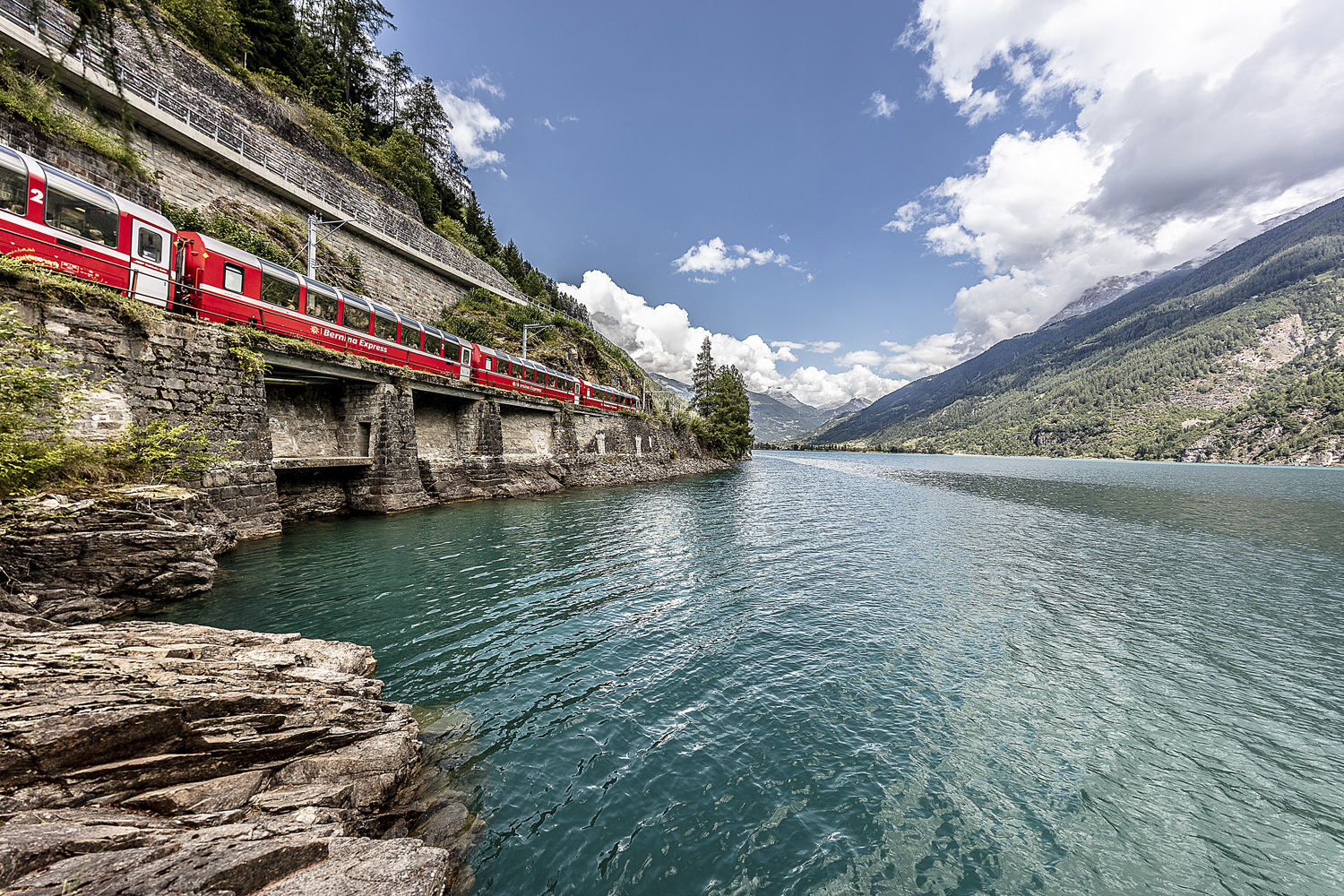From Geneva or Zurich, here are six slow-speed, scenic coach tours to discover the postcard-perfect alpine landscapes of Europe’s most mountainous country
High alpine meadows with a few scattered cows, perpetual snow on sharp peaks, bright blue lakes, vertigo-inducing glaciers… Switzerland has everything you could wish for in an idyllic natural landscape, and a highly recommended way to appreciate this mountainous country in all its glory is to travel through it by train. Yes, all year round, if you like, but especially in summer, when the snow covers only peaks and massifs.
And it’s easy too. There are two ways to visit Switzerland by rail. The usual and the extraordinary. The regular way, which is the one the Swiss use every day, with regular trains and expresses that try to get you from one city to another as quickly as possible, and the panoramic way, which is the one that allows you to enjoy the scenery of the Alpine country without rushing and with the best views.
Tips for travelling in Switzerland by train
Fortunately for travellers, it is not necessary to decide on one of the two ways of travelling by rail before starting to discover Switzerland. It is possible to combine the two. This is possible thanks to the Swiss Travel Pass, a card that allows you to use Swiss transport, not only trains but also boats – useful for crossing some lakes – and buses, as well as some mountain lifts and a comprehensive network of museums. You can also use the Interrail.
What’s worth knowing is that scenic trains are slower than regular trains, but offer a better experience. They have large windows that often reach the ceiling, have more spacious seats, stop at picturesque villages and go into the heart of the mountains, over impossible bridges and through tunnels that cut through valleys. Switzerland, a country of great wealth on a rugged terrain, is a work of engineering in its own right, and the railway network is one of its great examples.
It should also be noted that a reservation is required to board the scenic trains and that there is an additional cost to the Swiss Travel Pass, which costs a minimum of 232 Swiss francs (about 237 euros) for three days of travel and increases as you add more days of travel or prefer to have a first class seat.

Six routes to discover Switzerland by train
Here are the top scenic trains in Switzerland. But first, remember that Geneva and Zurich are the two cities with the most international flights in the country and, logically, the usual starting points for your train adventure. If you start in Geneva, don’t forget to enjoy the immense Lake Geneva and its famous Jet d’Eau water fountain, wander around the historic centre of the main city in Switzerland’s French canton, visit St Peter’s Cathedral and even, if you’re interested, the UN headquarters. If you leave Zurich, the twin towers of the Grossmünster church, the Uetliberg viewpoint and Bahnhofstrasse, the main shopping and commercial artery of Switzerland’s financial capital, are a must-see.

1. Glacier Express
Perhaps Switzerland’s most famous scenic train, which runs even in winter. It links Sankt Moritz, near the border of Italy and Liechtenstein, with Zermatt, the town that overlooks the iconic Matterhorn, one of the Alpine peaks that most climbers dream of. It passes through Coira, Disentis/Mustér, Andermatt, Brig, and Visp via 291 bridges and 91 tunnels, and offers everything you’d expect from such a journey at a slow speed, taking almost eight hours to cover some 300 kilometres. If you can only take one scenic train journey in Switzerland, try to make it this one.

2. The chocolate and cheese train
One of the most curious journeys, a must for gourmet souls in pursuit of gastronomic delights. It starts its seven-and-a-half hour round trip in Montreux, on the shores of Lake Geneva, and passes through Broc, the home of the multinational Nestlé, which has a chocolate museum. There is also an organised stop in the village of Grüyere, with a visit to the museum house of the famous cheese.

3. Bernina Express
This premium train is a World Heritage Site. It was built more than a century ago and in just 122 kilometres it crosses 200 bridges and viaducts and passes through some 20 towns between Chur and Tirano, passing through Davos and St. Moritz. It takes more than 4 hours to complete the route, which can be completed by bus to Lugano. The Landwasser and Brusio viaducts are two engineering gems to admire along the way, and the views of the Morteratsch glacier and the Lej Nair, Pitschen and Bianco lakes are breathtaking.

4. Gothard Panorama Express
This is the route that allows you to discover traditional Switzerland. It passes through the country’s most famous tunnel, the Gotthard, and follows a line from north to south, from Lugano to Flüelen or, best of all, to Lucerne, if you cross the gentle Lake Lucerne by boat, another worthwhile experience. It’s a slow train, taking five and a half hours, and can take you to the castles of Bellinzona or Giornico, or Mount Rigi near Lucerne, or William Tell’s chapel.

5. Golden Pass Express
One of the shortest, but just as spectacular, as all of Switzerland’s routes. It covers the stretch between Montreux and Interlaken in three and a half hours, passing through the vineyards of Lavaux and taking in Lake Geneva and five other lakes. Plus, it’s a luxury train, with reclining leather seats. It’s a real treat.
6. Luzern-Interlaken-Express
A two-hour train journey through the lake district between Zurich and the capital Bern, although the train itself ends in Interlaken. You cross five lakes, countless waterfalls and rivers. Lake Brienzsee is beautiful.

Summary
Switzerland is the most mountainous country in Europe and has a unique railway infrastructure to reach places where cars are not even allowed, such as Zermatt. Scenic railcars are the most comfortable and relaxing way to tour the country and sample its natural wonders, the lakes, valleys, glaciers and mountains that have made Switzerland world-famous.





